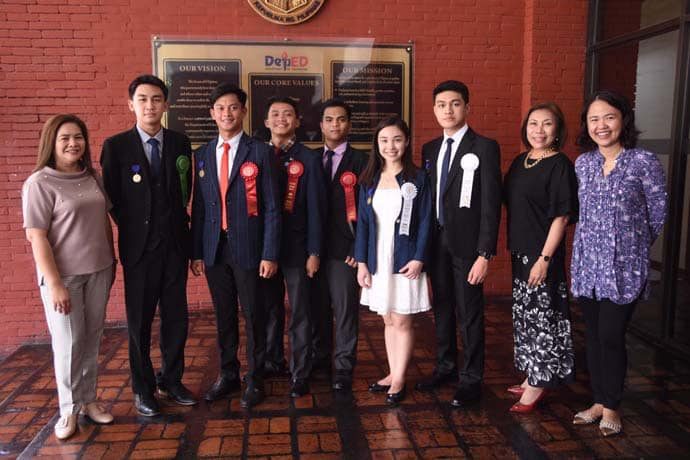SUMMARY
This is AI generated summarization, which may have errors. For context, always refer to the full article.

MANILA, Philippines – Three students from Camarines Sur High School in Naga City have just earned their place among the stars: minor planets were named after them after they bagged an award at the 2018 Intel International Science and Engineering Fair (ISEF).
High school students Eugene Rivera, Joscel Manzanero, and Keith Cadores earned the honor in recognition of their study “Design and Development of Solar-Tracking Arduino-Rooted PV Panels,” which won second place at the contest’s physical energy category, the Department of Education (DepEd) announced in a statement on Tuesday, April 9.
DepEd said the students each received a certificate identifying their minor planet with an orbital plot showing its location. For their design, the students got a prize of $1,500.
The students competed in the Intel ISEF after they won in the 2018 National Science and Technology Fair.
The Intel ISEF is the world’s largest international pre-college science competition with some 1,800 students from over 75 countries showcasing their research. Students compete for an average of $4 million in prizes.
More about their study: According to an abstract on Intel ISEF’s website, the students’ research looked into harnessing energy through a “photovoltaic cell” or solar cell as a renewable energy source.
“The study aimed to improve the power harvesting and generating capacity of photovoltaic cells by designing and building a solar device that mimics a flower opening when the sun is out, tracks the sun’s movement, closes when the light source is no longer detected and responds to humidity and temperature to maximize power generation,” the abstract said.
The students’ research made use of materials like a broken umbrella, electric fans, and scrap acrylic sheets aside from “electronics, humidity sensors, and servo motors,” among others.
Tests on the robotic design, the abstract said, improved the capacity of the solar cell to harness power.
The Massachusetts Institute of Technology (MIT) Lincoln Laboratory usually names asteroids discovered in their lab after high school students who excel in science competitions.
In a letter, Grant Stokes, MIT Principal Investigator of the Lincoln Near-Earth Asteroid Research program, congratulated the students.
“MIT Lincoln Laboratory is proud to have this opportunity to encourage science education. Good luck in your pursuit of education and career. You are off to a great start!” Stokes said. – Rappler.com
Add a comment
How does this make you feel?
There are no comments yet. Add your comment to start the conversation.